World War Two German bunker in Alderney built inside Roman fort
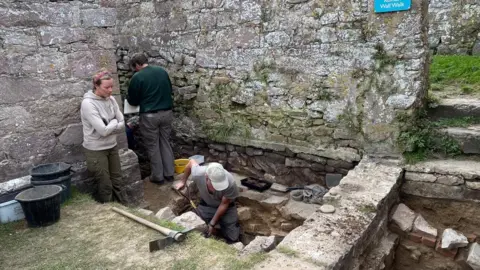 BBC
BBCA World War Two German bunker was constructed within the remains of a Roman tower, archaeologists have discovered.
The Alderney Nunnery is thought to be the site of one of the best preserved Roman forts in the British Isles.
It was used by the German military in the occupation of the Channel Islands.
Archaeologist Dr Jason Monaghan said the excavation had discovered how they placed the fortification "exactly inside" the 10ft (3m) thick walls.
 Dig Alderney
Dig Alderney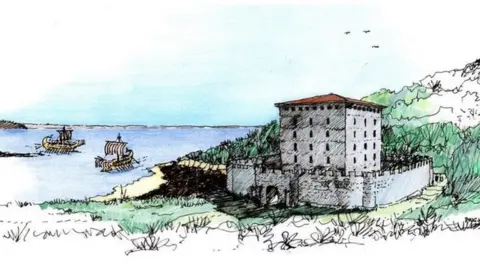 States of Alderney
States of AlderneyThe Nunnery has been occupied for about 1,700 years, containing the remains of structures from the Medieval, Tudor and Napoleonic eras built on top of each other.
The site, which overlooks Longis Bay, was confirmed to be from the Roman era in 2011.
The current excavation is being carried out by volunteers for Dig Alderney.
They are hoping to learn more about the tower and alterations made to the site over the centuries.
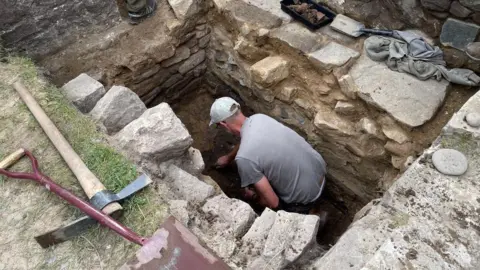
Dr Monaghan, who is leading the dig, said: "We have seen the way the Germans have inserted a personnel bunker exactly inside the old Roman tower."
Alderney was controlled by the German military from 1940 to 1945 and the island's entire population evacuated before the occupation.
It was heavily fortified with bunkers, anti-tank walls and tunnels.
The island was the site of two forced labour camps and the only two concentration camps on British soil, where thousands of people were taken.
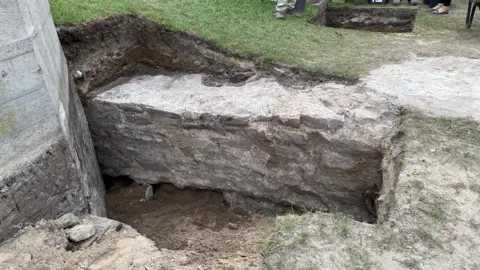
Dr Monaghan said they were in the process of unpicking a "whole succession of buildings, drains and mystery walls intersecting each other".
"We've just come across three floors all on top of each other and we're just trying to disentangle what eras they come from."
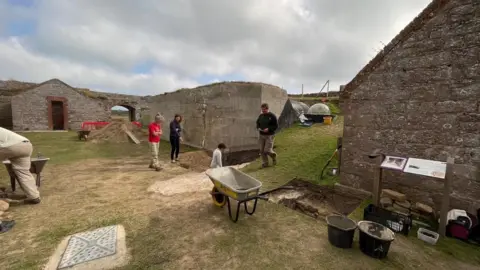
The Nunnery is owned by the States of Alderney, which is looking to develop the site further.
Caroline Gauvin, from Visit Alderney, said the States was hoping to preserve the area and keep the wall on view for locals and tourists to visit.
She said: "Because it really helps them understand where the central Roman tower was and also just how wide the walls were.
"It's absolutely amazing to have Jason and his team back digging in this site and finding more and more history and layers of archaeology."

Follow BBC Guernsey on Twitter and Facebook. Send your story ideas to [email protected].
